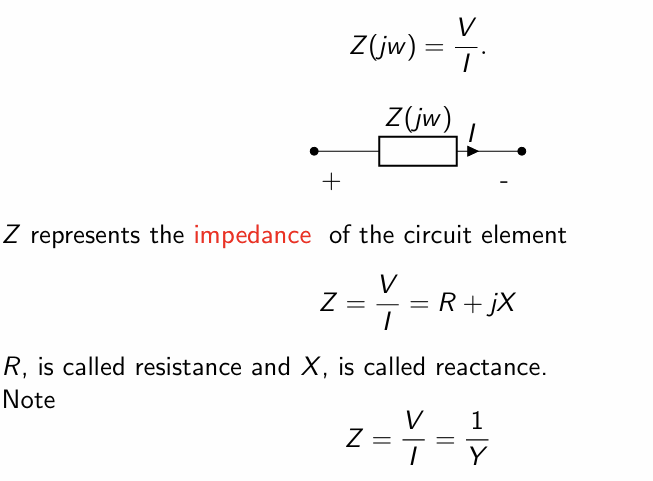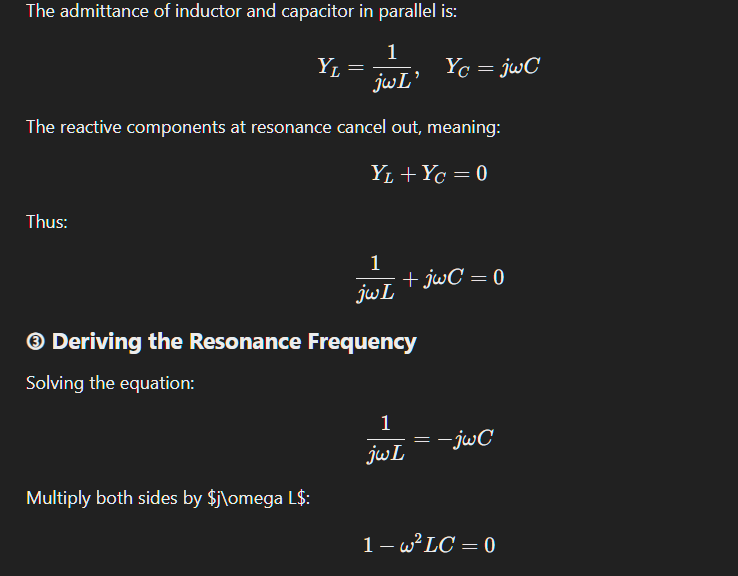rw combining impedances and admittances in series and parallel understanding the phase angle quality factor
impedance
Impedance Z is essentially the ratio of the voltage across a circuit element to the current through it when we are dealing with sinusoidal signals. It is resistance generalized for AC.
Z=V/I.
Of course these are in phasors, frequency domain

Z = V/I = R + jX
- The
jXterm in the impedance equationZ = V/I = R + jXrepresents the imaginary part of the impedance, called reactance - Reactance, like resistance, is measured in ohms. However, unlike resistance (which dissipates energy as heat), reactance stores energy in either an electric field (in a capacitor) or a magnetic field (in an inductor).
- The
jis used as a mathematical tool to represent the 90-degree phase shift between voltage and current in reactive components. It allows us to handle this phase difference using complex number arithmetic. Check capacitor and inductance in frequency domain
admittance
Y = I / V = G + jB
- This equation shows two important things:
- It restates the basic definition of admittance (Y = I/V).
- It decomposes admittance into its real and imaginary components:
G: Conductance (the real part). Conductance is related to how easily a circuit conducts current in phase with the voltage. For a purely resistive circuit, G = 1/R. However, G is not simply 1/R if there’s also reactance.B: Susceptance (the imaginary part). Susceptance is related to how easily a circuit allows current flow that is out of phase with the voltage (due to energy storage in capacitors and inductors).j: The imaginary unit, indicating the 90-degree phase shift associated with susceptance.
the table

resonance
Resonance occurs at a particular resonance frequency, that is when the imaginary parts of impedances or admittances of circuit elements cancel each other.

